
Why do some customers visit the same QSR location every day, and some will visit multiple locations of the same chain? The latest Restaurant Readiness Index includes a Deep Dive on how single versus multiple-location customers differ.
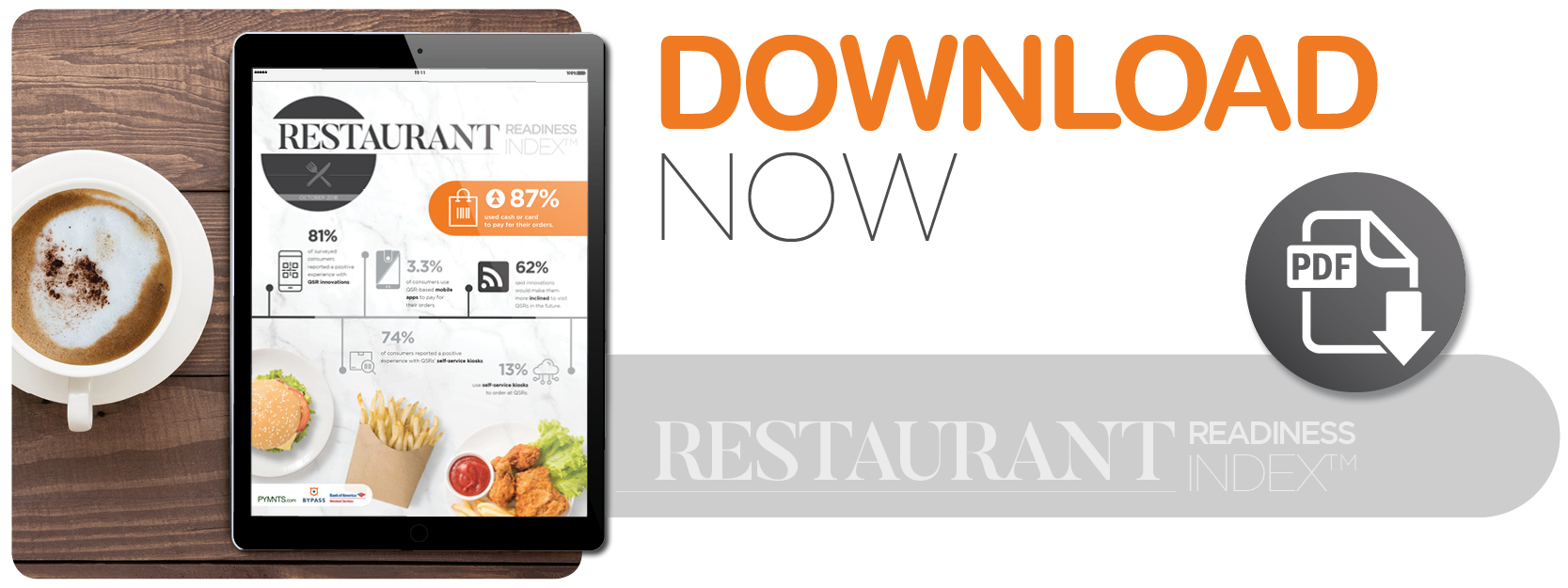 Every QSR location has its regulars — the folks who stop by at appointed daily or weekly times — as well as more fickle customers, who visit because it was in the right place at the right time. For our analysis, we put those customers into two different categories. The single-location customer visits the same location of the same QSR, while multiple-location customers will visit the same QSR across many of that brand’s locations. With so many speedy and efficient dining options available today, however, one might expect that customers are unlikely to frequent a specific restaurant location. According to our latest survey, though, most people go to the same store rather than multiple locations. There may be several reasons for this, starting with convenience: It’s easier to go to the store down the block rather than across town. The smaller the chain, the less likely customers are to visit multiple locations, as these chains have fewer locations to start with. In addition, customers may enjoy the features or ambience of a particular outlet.
Every QSR location has its regulars — the folks who stop by at appointed daily or weekly times — as well as more fickle customers, who visit because it was in the right place at the right time. For our analysis, we put those customers into two different categories. The single-location customer visits the same location of the same QSR, while multiple-location customers will visit the same QSR across many of that brand’s locations. With so many speedy and efficient dining options available today, however, one might expect that customers are unlikely to frequent a specific restaurant location. According to our latest survey, though, most people go to the same store rather than multiple locations. There may be several reasons for this, starting with convenience: It’s easier to go to the store down the block rather than across town. The smaller the chain, the less likely customers are to visit multiple locations, as these chains have fewer locations to start with. In addition, customers may enjoy the features or ambience of a particular outlet.
Within this pattern, some chains are more likely to have single-location visitors than others. More than 80 percent of Arby’s customers frequent the same location, for example, while only 60 percent of McDonald’s do. At Starbucks, 67 percent say they usually visit the same store.
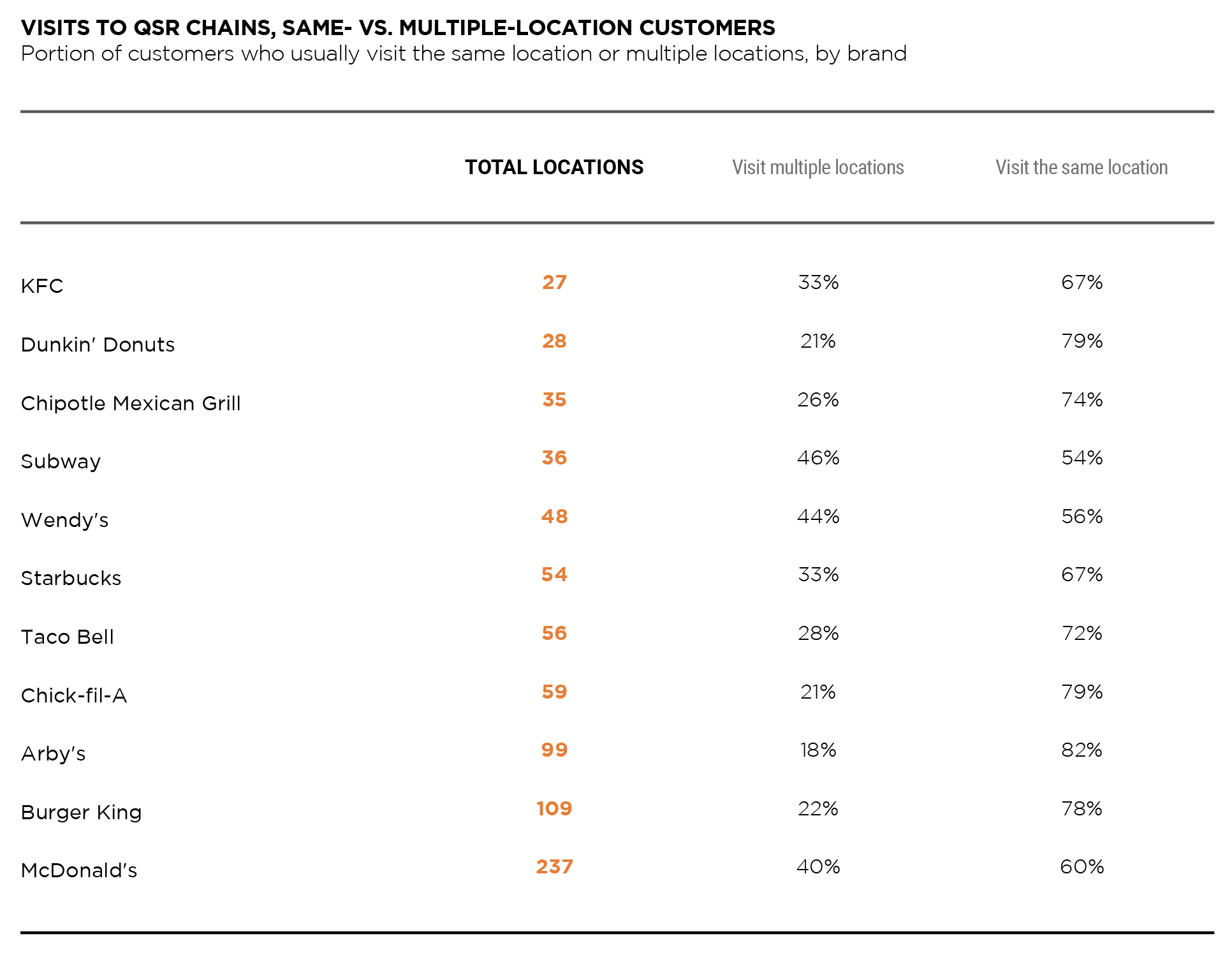 Looking at geography, we don’t find a clear difference between whether customers are more likely to frequent single or multiple QSR locations. There’s more consistency among those along and near the West Coast, with about one-third reporting they visit multiple locations.
Looking at geography, we don’t find a clear difference between whether customers are more likely to frequent single or multiple QSR locations. There’s more consistency among those along and near the West Coast, with about one-third reporting they visit multiple locations.
 When it comes to digital innovation attitudes, several subtle, notable differences emerge. Customers who frequent various locations feel more positively toward online/app ordering, menus that update automatically and self-service kiosks. Ninety-one percent who visited a QSR and used online/app ordering described their experiences as positive, compared to 83 percent of same-location customers. It could be that they are in the habit of pursuing multiple dining options and might be more impressed by features that distinguish their experiences at each location. This could also be another illustration of how mobility and tech-savviness go together.
When it comes to digital innovation attitudes, several subtle, notable differences emerge. Customers who frequent various locations feel more positively toward online/app ordering, menus that update automatically and self-service kiosks. Ninety-one percent who visited a QSR and used online/app ordering described their experiences as positive, compared to 83 percent of same-location customers. It could be that they are in the habit of pursuing multiple dining options and might be more impressed by features that distinguish their experiences at each location. This could also be another illustration of how mobility and tech-savviness go together.
Multiple-location customers are more receptive to some technologies than others, especially if they see that technology reflected in different QSR locations. The more they were exposed to technology, the more likely they were to use it. Technology typically has a positive effect on the customer experience for both the single- and multiple-location customer.
Innovations like curbside pickup, digital wallet payments and loyalty reward programs see more enthusiastic same-location customers than multiple-location customers, or the difference was negligible. In terms of what might motivate them to more frequently visit QSRs, the largest difference was found in technologies that eliminate the need to wait in line — 59 percent for same-location versus 50 percent of multiple-location customers — another indication that the former were especially interested in features that save them time.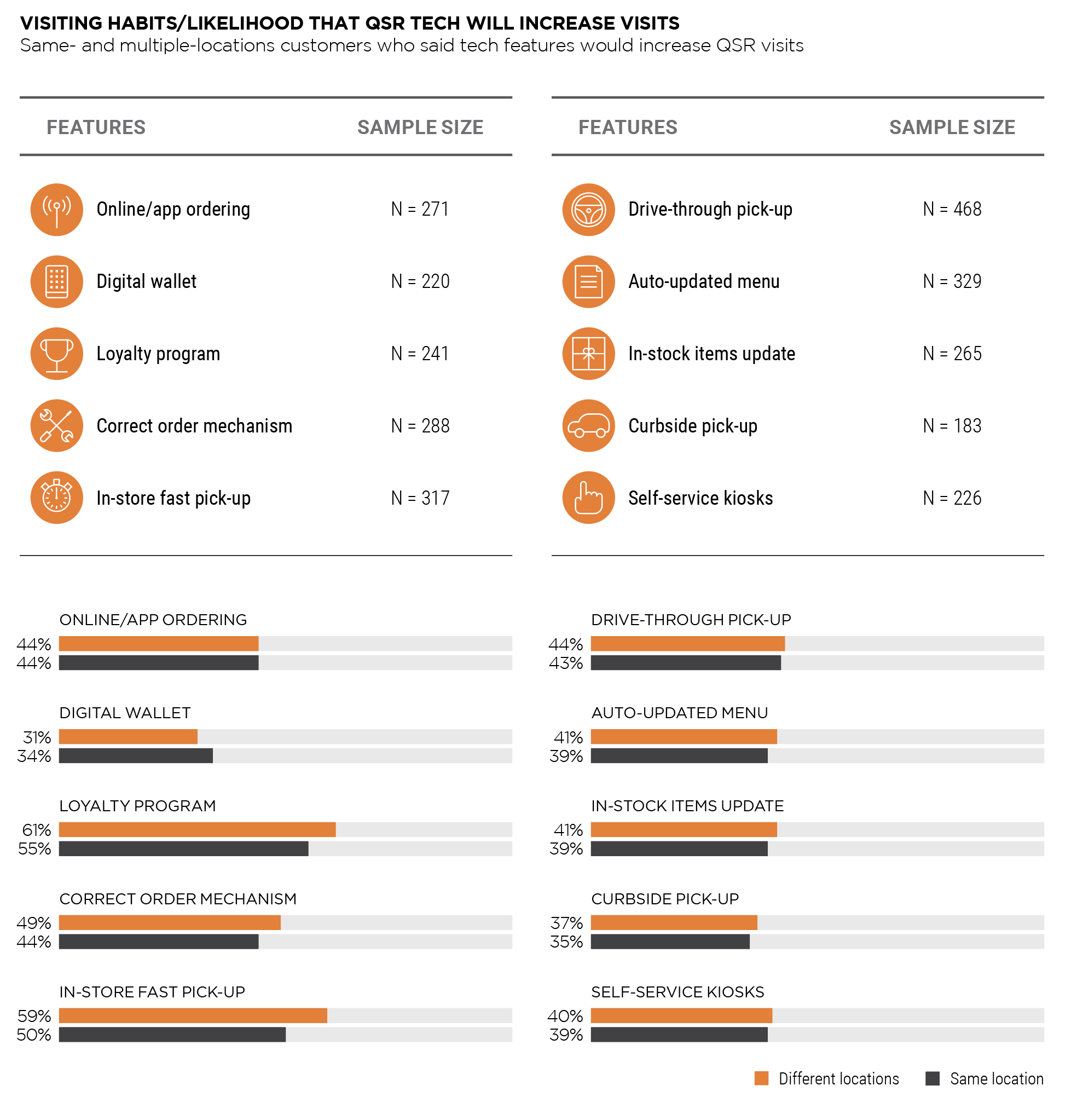
On the flip side, same-location patrons were more likely to identify drive-through pickup and loyalty programs as incentives that might make them more inclined to visit QSRs more often.
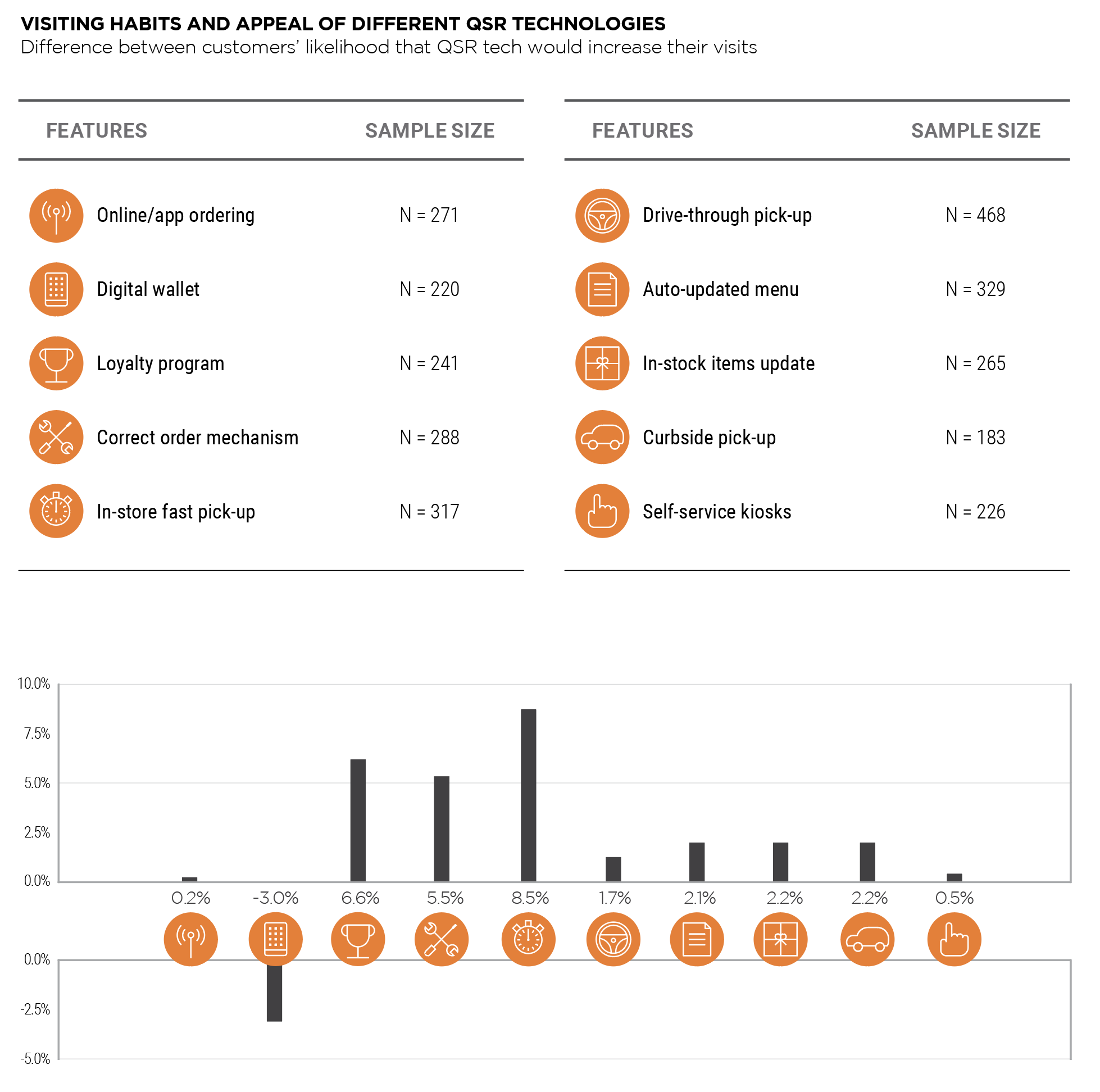 Different-location customers appear more amenable to new QSR technologies. Taking a closer look at how attitudes differ within this group, we find innovations’ usage is a strong determinant of whether they’d be inclined to increase QSR visits and purchases. Sixty-three percent of those who used self-service kiosks said they would likely visit the chain more frequently in the future, compared to the 24 percent who didn’t use such devices.
Different-location customers appear more amenable to new QSR technologies. Taking a closer look at how attitudes differ within this group, we find innovations’ usage is a strong determinant of whether they’d be inclined to increase QSR visits and purchases. Sixty-three percent of those who used self-service kiosks said they would likely visit the chain more frequently in the future, compared to the 24 percent who didn’t use such devices.
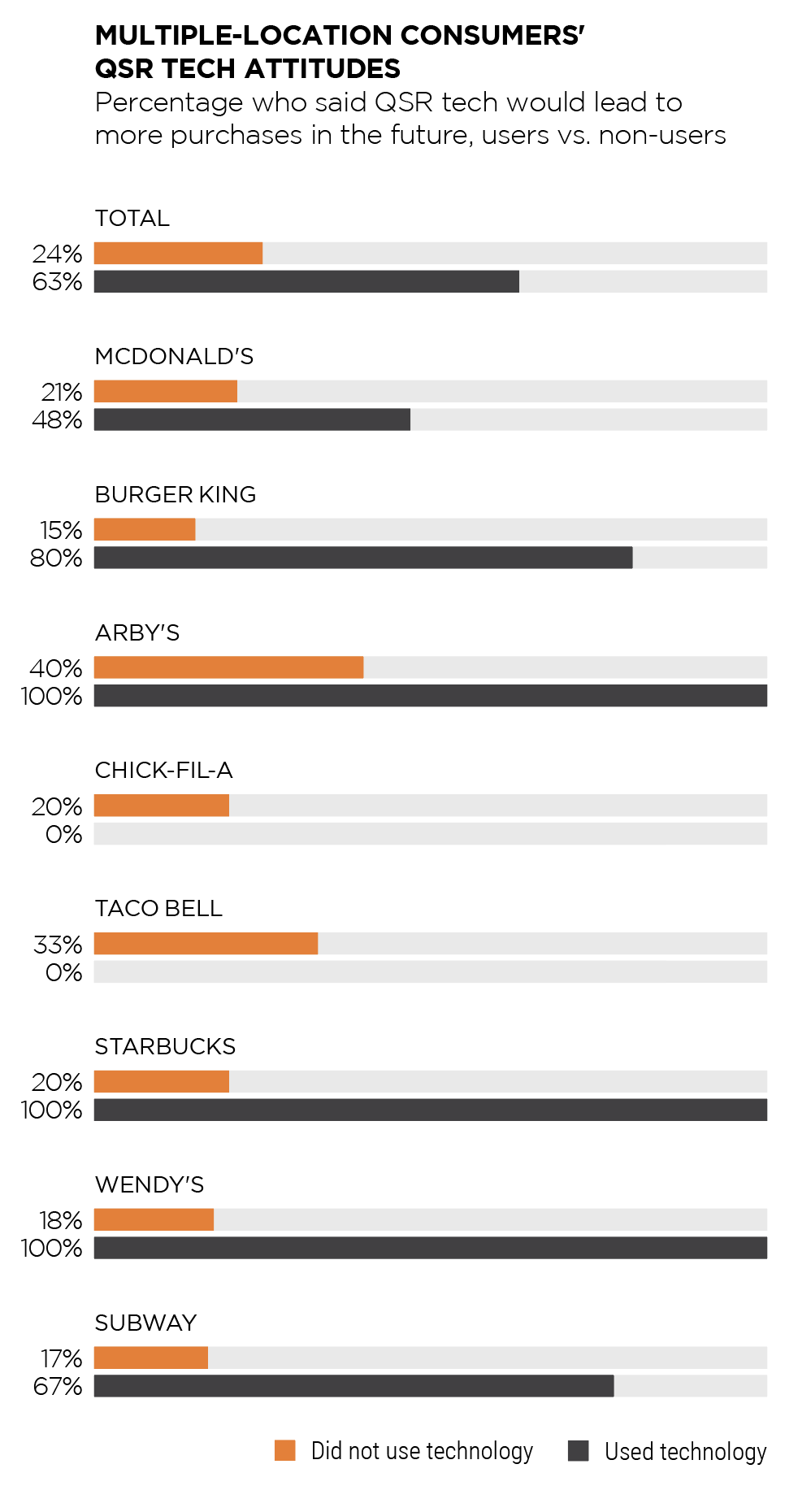
We find a similar dynamic with different-location customers who used services to pick their orders up at special locations without having to stand in line. Those who had used the services were nearly twice as likely to say they would spend more at the QSR in the future as those who hadn’t, at 54 percent and 28 percent, respectively.

The same holds true for online/app ordering: 67 percent of customers that visited different locations and used online ordering said they were more likely to boost their visits if QSRs had this feature, and just 26 percent of those who hadn’t experienced it said they would. Fifty percent of participants were likely to increase their visits because of loyalty programs, while only 31 percent of nonparticipants did.
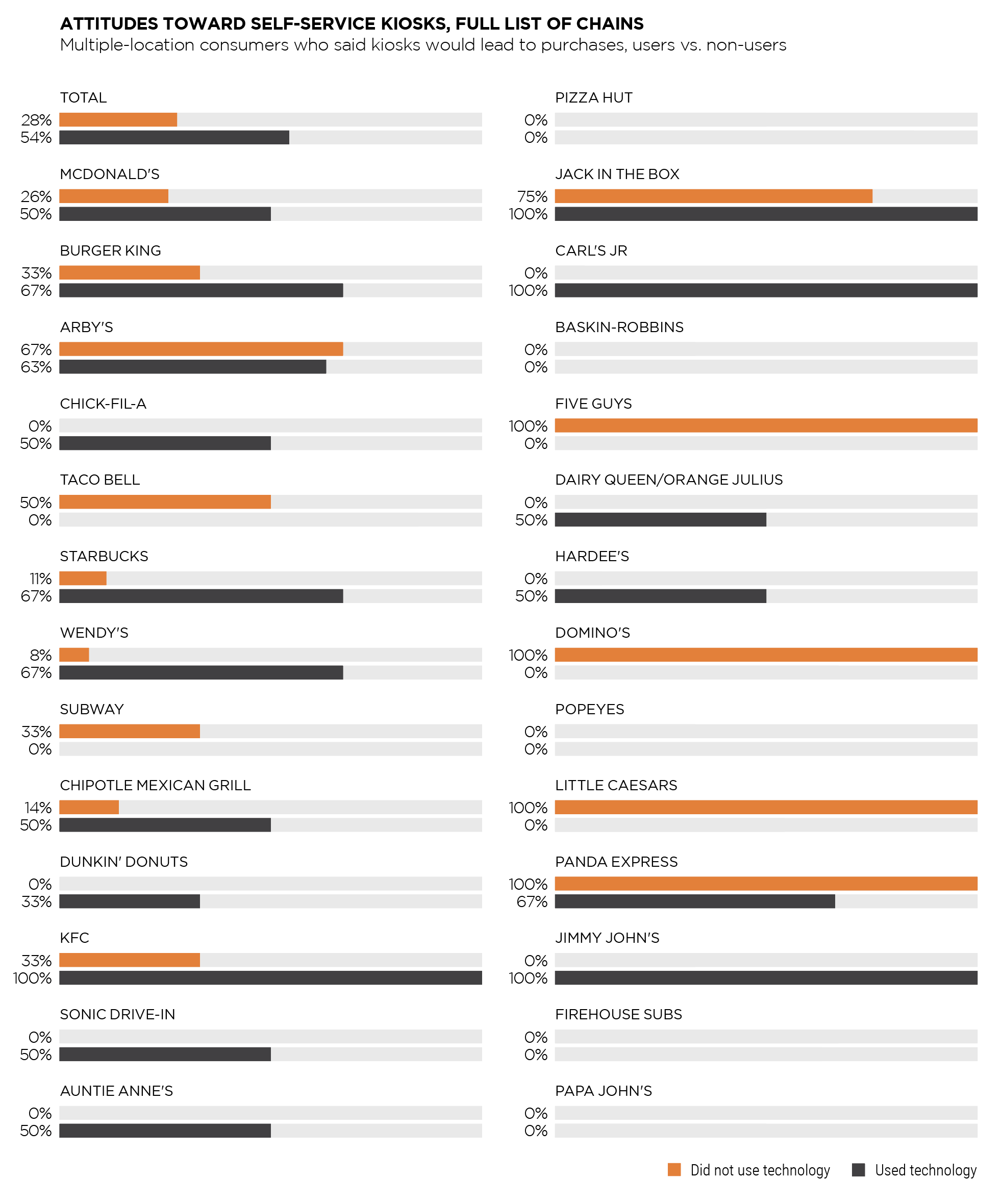
We can also conclude that multiple-location customers are more impressed by some chains’ technological offerings than others. Forty-eight percent of McDonald’s customers said self-serve kiosks would lead to greater purchases in the future, as did 80 percent of those at Burger King.
For Arby’s, which is ahead of the game in implementing new technologies, their presence didn’t make a huge impact on whether multiple-location customers were likely to increase their visits. Most said they would visit the restaurant more in the future, regardless of if they used kiosks, special pick-up locations or loyalty programs. One possibility is that technologies that reduce some customers’ wait times ultimately improve all customers’ experiences.
Although, if they were interested in saving time, wouldn’t more of them want tech that eliminate the need to wait in line?
This seems like a big point that can use highlighting: Exposure to tech makes multiple-location visitors much more likely to make purchases at a location with that technology.